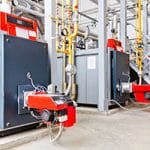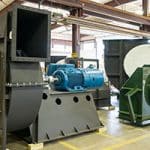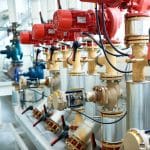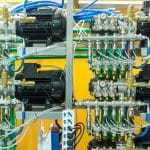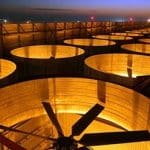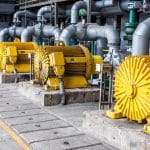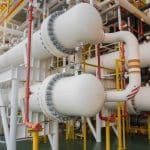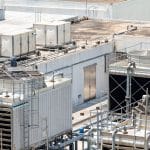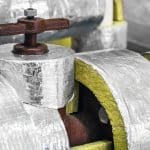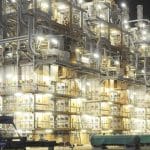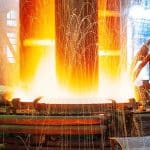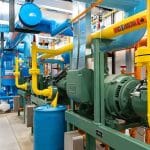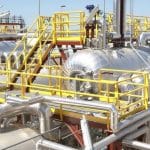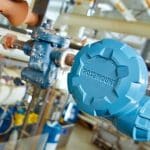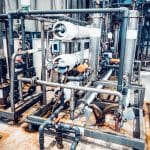The 3 kEs
- Provide just enough thermal energy for proper sintering or curing while minimizing excess heat input.
- A kiln with poor sealing allows hot air to escape, forcing the burners or heating elements to work harder to maintain the required internal temperature. The cumulative effect of such losses can be substantial over time.
- The latest energy-efficient refractories, such as lightweight insulating firebricks, ceramic fiber modules, and castable refractories, offer superior thermal insulation while reducing overall thermal mass. Consider retrofitting.
Industrial kilns are among the most energy-intensive components in manufacturing, used extensively in ceramics, metal processing, cement, glass production, and other high-temperature applications. And because they consume vast amounts of energy, making efficiency improvements is a top priority for Facilities Managers seeking to lower operational costs and improve sustainability.
While modern kilns incorporate energy-efficient technologies, many existing systems still rely on outdated designs, inefficient firing cycles, and high energy losses through inadequate insulation or waste heat. Manufacturing executives have a unique opportunity to enhance efficiency through precise process optimization, improved materials, and advanced monitoring. This article explores key strategies that can significantly reduce energy consumption while maintaining high-quality production outcomes.
Optimizing Firing Cycles
Firing cycles are at the heart of kiln operations, dictating how energy is distributed over time to process materials effectively. A poorly optimized firing cycle can lead to unnecessary energy waste through excessive heating, prolonged soak times, or inefficient temperature ramping.
To achieve maximum energy efficiency, firing ramps and hold times should be carefully tailored to the specific materials being processed. The goal is to provide just enough thermal energy for proper sintering or curing while minimizing excess heat input. This can be accomplished through segmented programming, which enables precise temperature control throughout the cycle.
For example, implementing controlled heating rates prevents overshooting target temperatures, which leads to wasted energy and potential damage to kiln linings. Similarly, avoiding extended hold times that do not contribute to material transformation can significantly reduce energy consumption. By refining these parameters, some manufacturers have reported energy savings of up to 15%, according to Nutec Bickley.
Improving Kiln Sealing
Even with a well-optimized firing cycle, a kiln will suffer unnecessary energy losses if its seals and refractory integrity are compromised. Kilns, especially those operating at high temperatures for prolonged periods, experience thermal expansion and contraction, which can lead to gaps in the door seals, refractory joints, and damper systems.
A kiln with poor sealing allows hot air to escape, forcing the burners or heating elements to work harder to maintain the required internal temperature. The cumulative effect of such losses can be substantial over time.
One of the most effective ways to improve kiln sealing is to conduct regular inspections of door gaskets, brickwork joints, and access hatches. If cracks or leaks are detected, repairing or replacing damaged refractory materials and seals can prevent unnecessary heat loss. Some facilities implement automatic sealing mechanisms that adjust for thermal expansion and maintain a tight seal throughout the firing cycle.
Additionally, ensuring that dampers close completely when necessary prevents excessive airflow from cooling the kiln prematurely. In continuous kilns, controlling entry and exit openings using curtain systems or adjustable sealing doors can greatly reduce thermal leakage.
Utilizing Energy-Efficient Refractory Materials
The materials that make up a kiln’s interior lining have a major impact on thermal efficiency. Traditional dense refractories absorb a large amount of heat before reaching operational temperature, leading to longer heat-up times and greater energy expenditure.
Modern energy-efficient refractories, such as lightweight insulating firebricks, ceramic fiber modules, and castable refractories, offer superior thermal insulation while reducing overall thermal mass. This means kilns require less energy to reach and maintain high temperatures.
Ceramic fiber modules, for example, have excellent insulation properties and can be installed in both new and existing kilns to minimize heat loss. These materials not only improve energy efficiency but also allow for faster cooldown cycles, reducing downtime between production runs.
Facilities managers should periodically assess the condition of kiln linings and consider upgrading to advanced refractory materials that provide better insulation and longevity. Some studies have shown that simply switching from traditional firebrick to insulating ceramic fiber modules can lead to energy savings of 10-25%, as discussed in Refractories Worldforum.
Recovering Heat from Exhaust Gases
A significant portion of a kiln’s energy is lost through exhaust gases, often reaching temperatures between 600°F and 1800°F. Capturing and reusing this waste heat is one of the most effective ways to improve efficiency.
One common approach is installing heat exchangers to preheat combustion air before it enters the burners. By doing so, less fuel is needed to raise the air to the required temperature, leading to a direct reduction in energy consumption. Some systems use heat recovery units to transfer this waste energy to process water or space heating applications within the facility.
Another strategy involves recirculating a portion of the kiln’s exhaust gases back into the chamber, reducing the demand for fresh air heating. In tunnel kilns, for example, counterflow heat recovery systems can capture exhaust heat from the cooling zone and redirect it to the preheat zone.
Some manufacturers have implemented regenerative burner systems, where heat from outgoing flue gases is stored in refractory media and then used to preheat incoming combustion air. This can improve fuel efficiency by 30% or more, as explained in Latest Advancements in Energy-Efficient Kiln Technology, published by the Sustainable Manufacturing Expo.
Switching to Alternative Fuels
Fuel selection plays a critical role in both energy efficiency and environmental impact. While many kilns still operate on traditional fossil fuels, alternative options such as biomass, hydrogen, and synthetic gases offer significant advantages.
Natural gas remains a preferred choice for many facilities due to its lower carbon footprint compared to coal or oil. However, hydrogen is emerging as a promising alternative due to its high calorific value and zero emissions when burned.
Biomass fuels, such as wood pellets or agricultural waste, provide a renewable alternative that can be cost-effective depending on availability. Some manufacturers have adopted hybrid kiln systems that allow switching between multiple fuel sources based on price fluctuations and sustainability goals.
Switching fuels often requires modifications to burners and combustion control systems, but the long-term savings and environmental benefits can justify the investment.
Monitoring Oxygen Levels for Optimal Combustion
In combustion-based kilns, excess oxygen in the combustion process leads to energy waste by carrying heat away in unused air. Maintaining the correct air-to-fuel ratio ensures that fuel is burned efficiently without introducing excessive cool air into the system.
Oxygen sensors and combustion control systems continuously monitor the air-fuel mixture, automatically adjusting burner settings to maintain an optimal balance. Keeping oxygen levels within the ideal range can reduce energy consumption by 5-10%, while also lowering NOx emissions.
Some advanced kilns integrate flue gas analyzers to provide real-time data on combustion efficiency, allowing operators to fine-tune burner performance. When paired with variable-speed fan drives, this approach further minimizes unnecessary energy use by reducing excess airflow.
Implementing Advanced Monitoring Systems
Energy Management Systems (EMS) provide real-time insights into kiln operations, enabling facilities managers to track energy consumption patterns and identify inefficiencies. These systems use data from temperature sensors, gas analyzers, and power meters to optimize performance.
AI-powered predictive analytics are being used in some facilities to anticipate kiln performance issues before they arise, allowing operators to make necessary adjustments to prevent energy waste. These systems can also integrate with automation controls, optimizing firing schedules dynamically based on production demands.
The benefits of advanced monitoring include not only energy efficiency but also process consistency, reduced defects, and lower maintenance costs.
Establishing a Preventive Maintenance Program
Preventive maintenance is essential for maintaining kiln efficiency. Over time, thermal stress, refractory wear, and mechanical degradation lead to inefficiencies that increase energy consumption.
A structured preventive maintenance program should include periodic inspections of burner components, refractory conditions, fan motors, damper functionality, and heat exchanger integrity. Any damaged or degraded components should be repaired or replaced immediately to prevent further inefficiencies.
By proactively maintaining kiln components, facilities managers can avoid unexpected breakdowns, reduce costly repairs, and maintain optimal efficiency year-round.
The Big Finish
Facilities managers who embrace a comprehensive approach to kiln efficiency—ranging from optimized firing cycles to predictive analytics—can achieve substantial cost savings and sustainability benefits. By prioritizing monitoring, maintenance, and process optimization, industrial facilities can improve energy efficiency while maintaining high-quality production standards.




